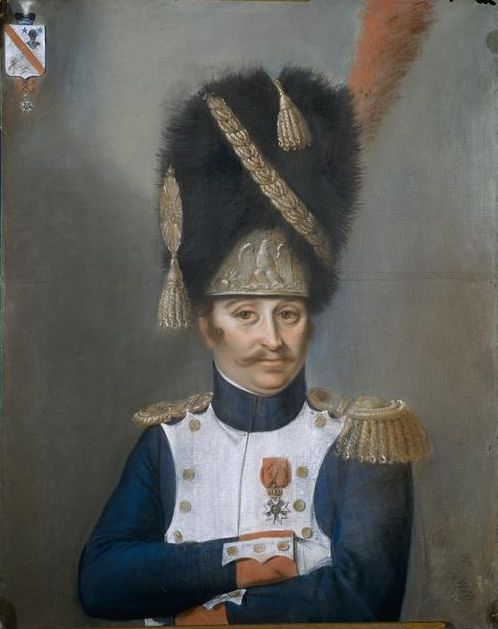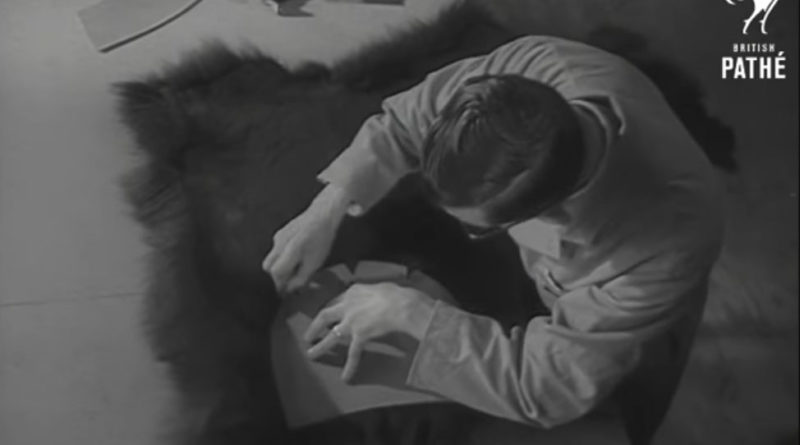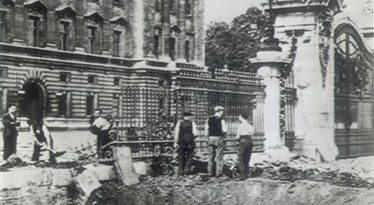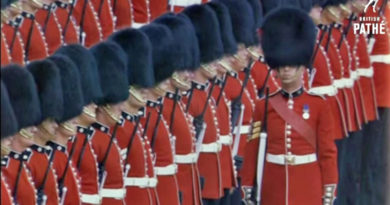(video) Bearskin Hat Makers, 1951
A great little video (only short) from way back in 1951 with the Bearskin maker (Alfred Powell) examining skins that will be made into a bearskin.
For those that are ‘against’ this kind of thing, just for information, the Guards take approx 100 pelts a year from the cull that takes place ‘every year’ – the total number culled are 1000’s by native Inuit hunters in a Government of Canada programme to keep bear numbers under control.
Small history of the Bearskin:
The cloth caps worn by the original grenadiers in European armies during the 17th century were frequently trimmed with fur. The practice fell into disuse until the second half of the eighteenth century when grenadiers in the British, Spanish and French armies began wearing high fur hats with cloth tops and, sometimes, ornamental front plates. Imitating their Prussian counterparts, French grenadiers are described as wearing bearskins as early as 1761. The purpose appears to have been to add to the apparent height and impressive appearance of these troops both on the parade ground and the battlefield.

During the nineteenth century, the expense of bearskin caps and difficulty of maintaining them in good condition on active service led to this form of headdress becoming generally limited to guardsmen, bands or other units having a ceremonial role. The British Foot Guards and Royal Scots Greys did however wear bearskins in battle during the Crimean War and on peacetime manoeuvres until the introduction of khaki service dress in 1902.
Immediately prior to the outbreak of World War I in 1914, bearskins were still worn by guard, ceremonial palace or other units in the British, Belgian, Danish, Dutch, Imperial German, Russian and Swedish armies. This did not include use of the busby and other types of smaller fur headdress sometimes confused with the high bearskin. The Italian Sardinian Grenadiers had discarded bearskins in the nineteenth century but were to readopt them for limited ceremonial wear in modern times.
Following the Battle of Waterloo and the action in which they gained their name, the Grenadier Guards were permitted to wear the bearskin. In 1831, this practice was extended to the other two regiments of Foot Guards then in existence. The Royal Scots Dragoon Guards, Honourable Artillery Company and officers of Fusilier regiments also wear the bearskin as part of their ceremonial uniform. The bearskin should not be mistaken for the busby which is a much smaller fur cap worn by the Royal Horse Artillery and hussar regiments in full dress. Nor should it be confused with the similar but smaller ‘sealskin’ cap worn by other ranks of the Royal Fusiliers, actually made of raccoon skin.
The standard bearskin of the British Foot Guards is 18 inches tall, weighs 1.5 pounds and is made from the fur of the Canadian black bear. However, an officer’s bearskin is made from the fur of the Canadian brown bear as the female brown bear has thicker, fuller fur and is dyed black. An entire skin is used for each hat. The British Army purchase the hats, which are known as caps, from a British hatmaker which sources its pelts from an international auction. The hatmakers purchase between 50 and 100 black bear skins each year at a cost of about £650 each. If properly maintained, the caps last for decades.






